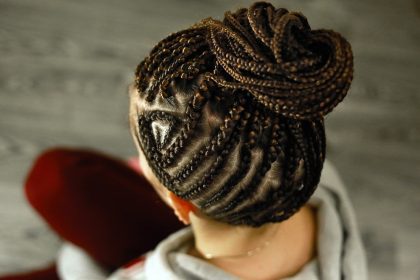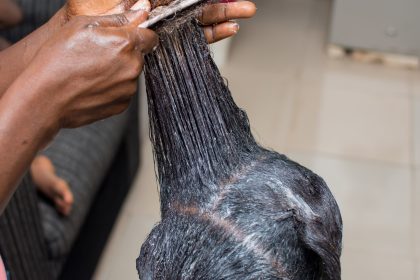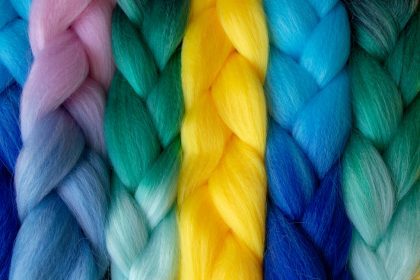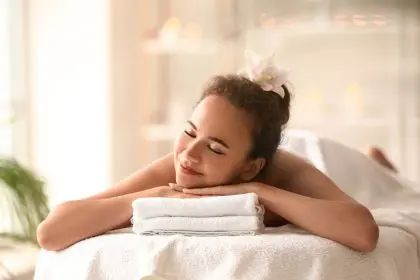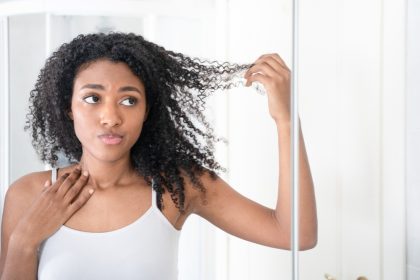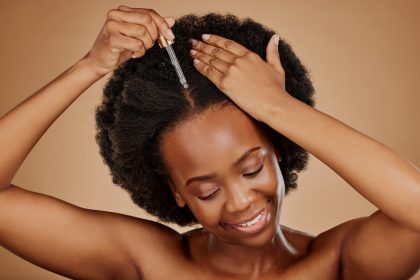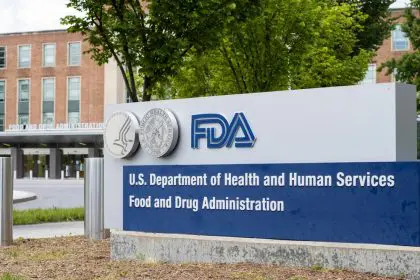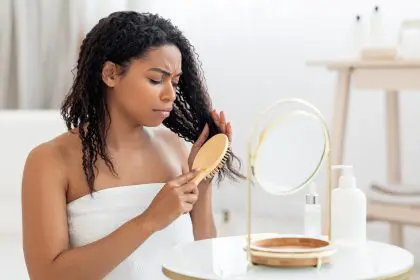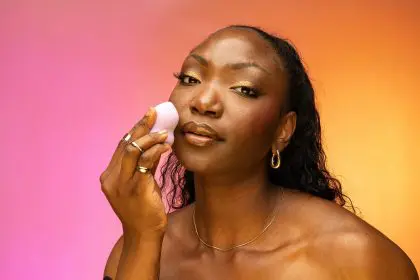Braids represent more than just a hairstyle for millions of women—they embody cultural heritage, practical beauty, and personal expression. These protective styles have graced heads for generations, offering versatility and convenience that fits seamlessly into busy lifestyles. However, recent discoveries about the synthetic materials used in modern braiding have cast a troubling shadow over this beloved practice.
The synthetic fibers that make contemporary braiding accessible and affordable may come with hidden costs to health. What many consider a safe, routine beauty choice could potentially expose users to dangerous chemicals on a regular basis. This reality has prompted serious questions about product safety and regulatory oversight in the beauty industry.
Understanding the scope of chemical exposure through braiding hair becomes crucial as more evidence emerges about potential health risks. The products that millions trust for their hair care routines may require closer examination and more informed choices moving forward.
The intersection of beauty, culture, and health creates complex challenges that extend beyond individual consumer decisions. Addressing these concerns requires awareness, advocacy, and systemic changes to protect those who have long relied on these products as part of their daily lives.
Widespread contamination across brands
Recent comprehensive testing revealed that toxic chemicals appear to be a universal problem rather than isolated incidents with specific manufacturers. Laboratory analysis of ten different synthetic braiding hair products showed contamination across every single sample tested, indicating systemic issues within the industry.
The testing focused on widely available products that represent the majority of synthetic braiding hair purchases. These products come from various manufacturers and price points, suggesting that contamination affects both budget and premium options equally.
Carcinogenic substances appeared in 100 percent of tested samples, while lead contamination affected 90 percent of products examined. Acetone, a chemical typically associated with nail polish remover, was detected in every single product tested.
The universal nature of contamination suggests that the problem lies within the manufacturing processes or raw materials used across the industry. Individual brands may not be solely responsible for contamination if the base synthetic materials contain inherent chemical issues.
These findings indicate that consumers cannot simply switch brands to avoid exposure. The contamination appears to be endemic to synthetic braiding hair as a product category, requiring more fundamental changes to address the problem effectively.
The Kanekalon concern
Kanekalon, the synthetic fiber used in most braiding hair products, has become the focus of health concerns due to its chemical composition and manufacturing process. This material, originally developed for other industrial applications, found its way into beauty products without adequate safety testing for prolonged skin contact.
The production of Kanekalon involves chemical processes that can leave residual substances in the final product. These manufacturing byproducts may include volatile organic compounds, heavy metals, and other potentially harmful substances that weren’t intended for direct human contact.
Unlike natural hair, synthetic fibers like Kanekalon don’t undergo the same biological processes that might neutralize or eliminate harmful substances. The chemicals present during manufacturing can remain stable within the fiber structure, creating potential for ongoing exposure during wear.
The widespread use of Kanekalon across different brands and product lines means that contamination affects a broad spectrum of braiding hair options. This ubiquity makes it difficult for consumers to find alternative synthetic options that don’t carry similar risks.
Understanding the source of contamination in Kanekalon production could lead to improved manufacturing processes that eliminate or reduce toxic chemical content. However, such changes would require industry-wide cooperation and potentially significant investment in new production methods.
Health risks from chemical exposure
The chemicals found in braiding hair products pose various health concerns depending on the duration and frequency of exposure. These substances can enter the body through skin absorption, particularly from the scalp where hair products remain in close contact for extended periods.
Carcinogenic compounds, found in all tested products, represent the most serious long-term health concern. While wearing braids occasionally may not pose significant cancer risk, regular use over many years could potentially increase exposure to levels that warrant concern.
Heavy metals like lead can accumulate in body tissues over time, potentially affecting neurological function, kidney health, and other organ systems. Children and pregnant individuals face particular vulnerability to lead exposure due to developmental concerns.
Volatile organic compounds can cause immediate symptoms including headaches, throat irritation, and respiratory issues. These symptoms may be mistakenly attributed to other causes, making it difficult to identify braiding hair as the source of health problems.
Endocrine disrupting chemicals found in some products may interfere with hormonal balance, potentially affecting reproductive health, metabolism, and development. These effects can be subtle and may not manifest immediately after exposure.
Vulnerable populations at greater risk
Certain groups face heightened vulnerability to chemical exposure from braiding hair products due to biological factors, frequency of use, or existing health conditions. Understanding these risk factors helps identify who needs the most protection from contaminated products.
Women who wear braids regularly throughout their lives accumulate higher lifetime exposure to any chemicals present in synthetic hair. This cumulative exposure pattern increases the potential for adverse health effects compared to occasional users.
Pregnant individuals face dual concerns from chemical exposure through braiding hair. Toxic substances can potentially cross the placental barrier, affecting fetal development during critical growth periods. Hormonal changes during pregnancy may also alter how the body processes certain chemicals.
Children and teenagers represent a particularly vulnerable population due to their developing organ systems and higher metabolic rates. Young people often wear protective styles for convenience and cultural reasons, but their bodies may be less equipped to handle chemical exposure.
Individuals with existing skin conditions like eczema or dermatitis may experience heightened reactions to chemical irritants in synthetic hair. These reactions can worsen underlying conditions and create additional health complications.
People with compromised immune systems or chronic health conditions may be less able to process and eliminate toxic substances effectively. This reduced capacity for detoxification could increase their risk of adverse effects from chemical exposure.
Immediate symptoms and warning signs
Chemical exposure from braiding hair can produce various symptoms that may appear during or shortly after installation. Recognizing these warning signs helps identify potential product-related health issues before they become more serious.
Scalp irritation represents one of the most common immediate reactions to contaminated braiding hair. This may manifest as itching, burning, redness, or tender areas where the synthetic hair contacts the skin.
Respiratory symptoms including throat irritation, coughing, or difficulty breathing may indicate exposure to volatile organic compounds released from synthetic hair products. These symptoms often worsen in poorly ventilated spaces.
Headaches and dizziness can result from inhaling chemical vapors released by synthetic hair, particularly during the installation process when products are handled extensively. These symptoms may persist if exposure continues.
Sleep disturbances have been reported by some individuals after getting braids with contaminated synthetic hair. Chemical exposure may interfere with normal sleep patterns through various mechanisms including hormonal disruption.
Skin reactions beyond the scalp may occur if chemicals transfer to other parts of the body through contact or if individuals develop systemic sensitivity to the substances present in synthetic hair.
Protective measures and alternatives
While the contamination problem requires industry-wide solutions, individuals can take steps to reduce their exposure to toxic chemicals in braiding hair. These protective measures may help minimize health risks while maintaining the ability to enjoy braided hairstyles.
Pre-washing synthetic hair before installation can help remove some surface chemicals and reduce immediate exposure. Soaking the hair in diluted apple cider vinegar or baking soda solutions may help neutralize certain compounds.
Choosing installation locations with good ventilation helps reduce inhalation of volatile compounds released during the braiding process. Open windows or fans can help disperse chemical vapors that might otherwise accumulate.
Limiting the duration of time that synthetic braids remain installed reduces total exposure time to any chemicals present in the products. Shorter wearing periods may help minimize cumulative exposure effects.
Selecting products from companies that prioritize safety testing and transparency may offer some protection, though contamination appears widespread across brands. Some newer companies specifically market chemical-free or organic synthetic alternatives.
Natural hair alternatives, while often more expensive and less durable, eliminate exposure to synthetic chemicals entirely. Human hair, wool, or other natural fibers offer safer options for those willing to invest in chemical-free alternatives.
The regulatory gap
The beauty industry operates under surprisingly limited regulatory oversight, particularly for products marketed to specific communities. This regulatory gap leaves consumers vulnerable to unsafe products that might not pass safety standards applied to other consumer goods.
Unlike medications or food products, cosmetic and beauty products face minimal pre-market testing requirements. Manufacturers can introduce new products without proving their safety through independent testing or regulatory approval processes.
The burden of proving harm often falls on consumers rather than requiring manufacturers to demonstrate safety before bringing products to market. This backwards approach leaves people exposed to potentially dangerous substances until problems become widespread enough to trigger regulatory action.
International manufacturing of beauty products can complicate regulatory oversight, as products may be produced in countries with different safety standards or enforcement mechanisms. Import regulations may not adequately screen for chemical contamination in beauty products.
Advocacy for stronger regulatory frameworks becomes essential to protect consumers from unsafe beauty products. This includes requirements for pre-market safety testing, mandatory ingredient disclosure, and regular monitoring of products already on the market.
Economic and cultural considerations
The synthetic braiding hair market represents significant economic activity within communities that have historically faced limited beauty product options. Addressing safety concerns must balance health protection with maintaining affordable access to culturally important styling options.
Many small businesses and individual stylists depend on affordable synthetic braiding hair to provide services to their communities. Sudden changes in product availability or dramatic price increases could negatively impact these economic networks.
Cultural practices and personal expression through braided hairstyles carry deep significance that extends beyond mere fashion choices. Solutions to safety concerns must respect and preserve these important cultural traditions while improving product safety.
The cost differential between synthetic and natural hair products creates accessibility issues for many consumers. Natural alternatives often cost significantly more than synthetic options, potentially creating a situation where safer products remain out of reach for those who need them most.
Innovation in safer synthetic materials or improved manufacturing processes could provide solutions that maintain affordability while eliminating health risks. Investment in research and development of safer alternatives becomes crucial for long-term solutions.
Moving toward safer products
The discovery of widespread chemical contamination in braiding hair products creates opportunities for positive change within the beauty industry. Consumer awareness, regulatory pressure, and market demand for safer products can drive improvements in manufacturing and safety standards.
Increased testing and transparency from manufacturers could help identify the safest available options while encouraging industry-wide improvements. Companies that prioritize safety testing and chemical-free production may gain competitive advantages as awareness grows.
Supporting brands that invest in safer formulations and manufacturing processes sends market signals that consumers value health and safety. Economic incentives for producing safer products can drive innovation and industry-wide improvements.
Advocacy efforts that push for stronger regulatory oversight and mandatory safety testing can create systemic changes that protect all consumers. These efforts require coordination between consumer groups, health advocates, and policy makers.
Education and awareness campaigns help consumers make informed choices while pushing for industry accountability. Knowledge about chemical risks empowers individuals to protect themselves while demanding better products from manufacturers.
The goal of achieving safer braiding hair products requires sustained effort from multiple stakeholders. Consumers, manufacturers, regulators, and advocates all play important roles in creating positive change that protects health while preserving cultural practices and economic opportunities.


